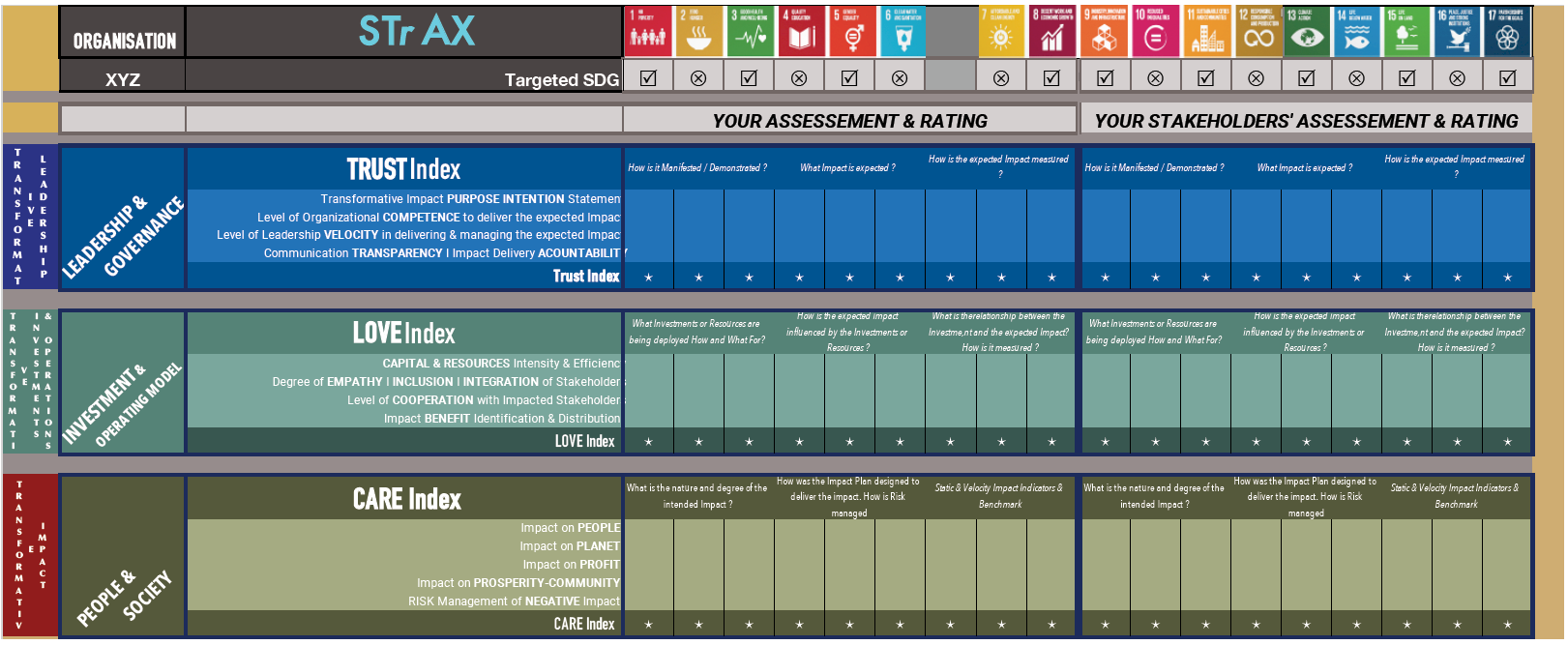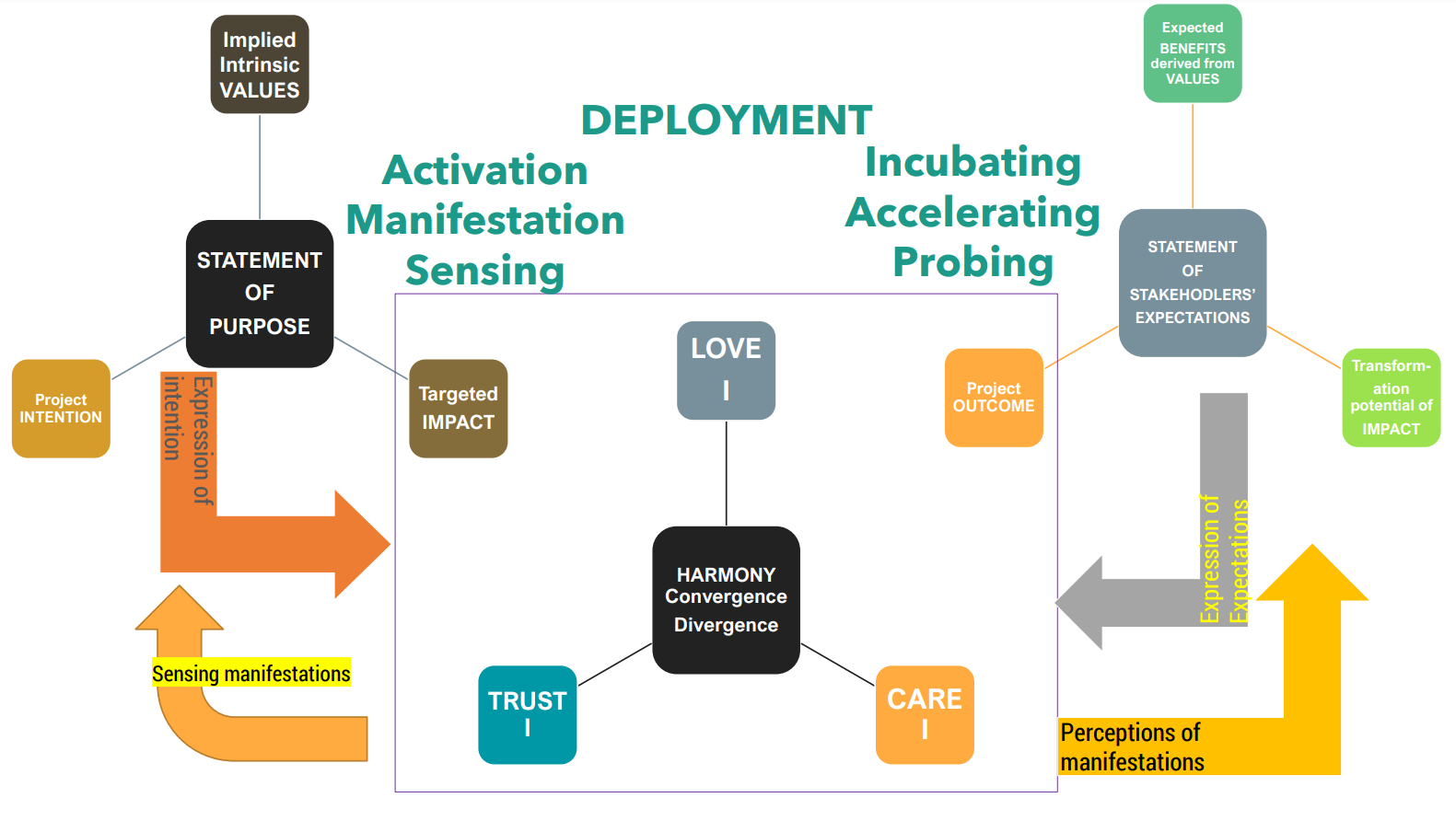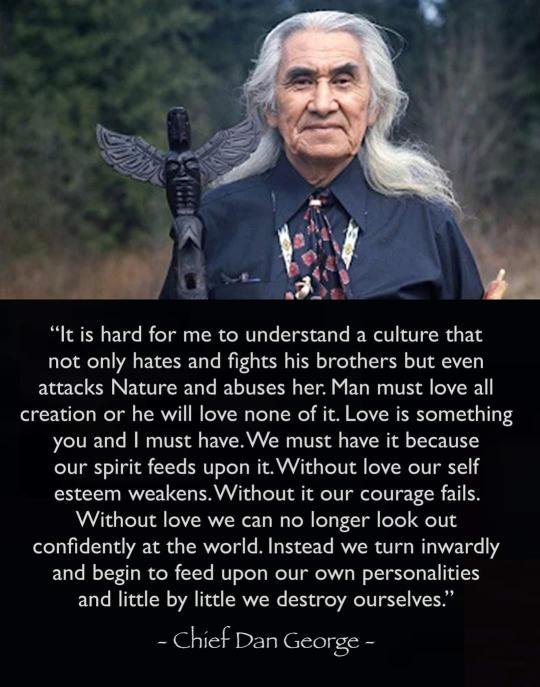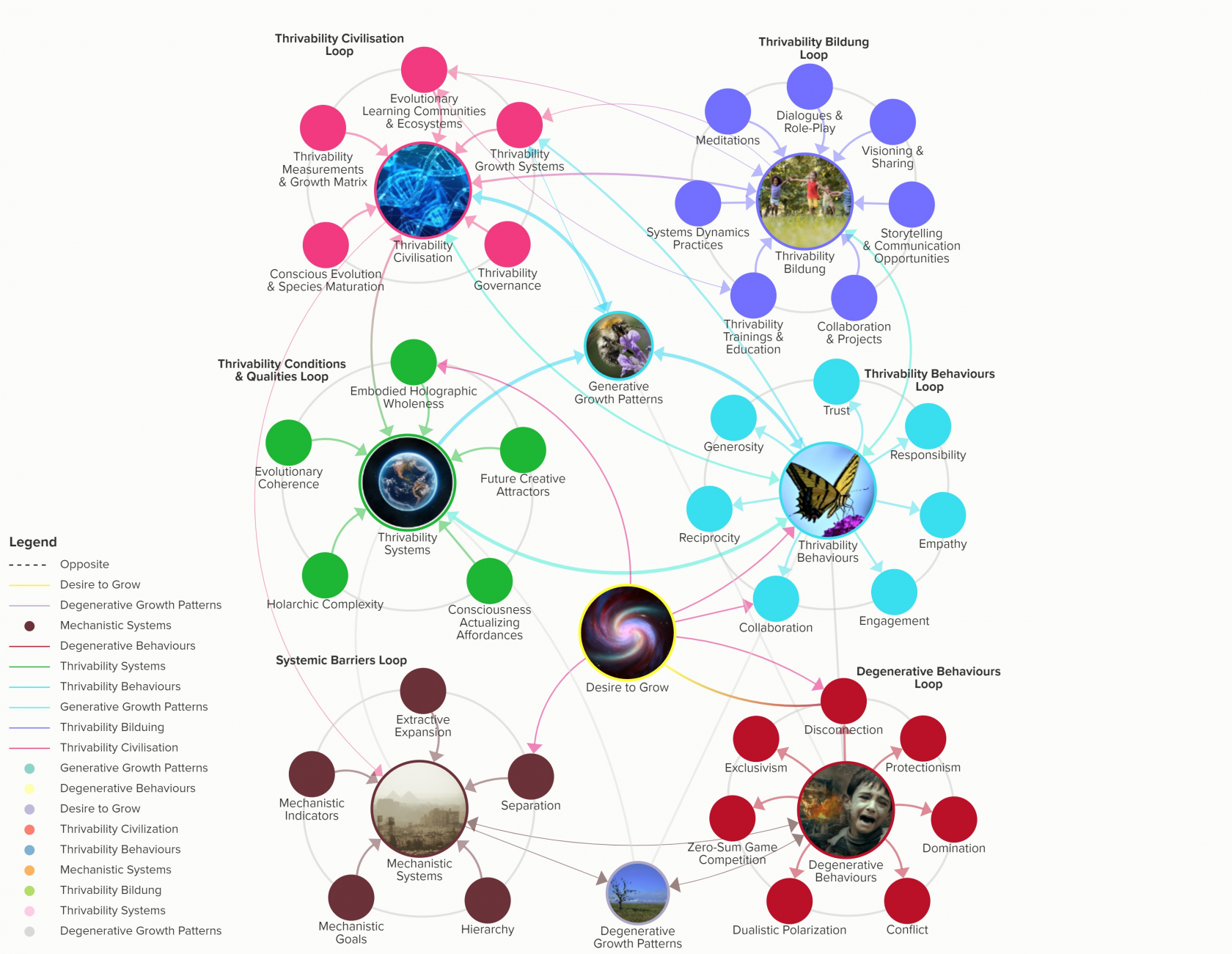Hypha and Seeds Impact Metrics
Approach
Overview
As Hypha (the organization) and Seeds (the movement) are slowly expanding their scopes, we need to build a framework to assess the impact we have on a wide range of initiatives for pilots on the ground and around the planet. While each initiative will have a different impact given the local context, we want to apply a common framework to measure key impact metrics, namely STrAX, a Sustainable Transformation Index developed by Aissa Azzouzi, the Activation Matrix, developed by Joachim Stroh and a System Map for Thrivability developed by Dr. Anneloes Smitsman. The result is a process (abstracted below) that can tell us how we are doing as our scopes are increasing from the individual-psychological (on the left) towards the organizational-cultural-communal, bioregional-governmental and - as an aggregate measure - the societal and the global (on the right).
It is important to note that we are working from both the individual (e.g. connecting to individuals starting to play the GPP game and become a resident) and the organizational (connecting with new alliance partners through the ambassador academy and network) as well as the bioregional-governmental (e.g. key players like Lisa and Franz working directly with government organizations in Costa Rica or Sweden). Having said that, the initiatives are very much focused on local "hot spots" (explained later) and pursue a complimentary strategy to rewarding broader audiences (e.g. all GPP holders) for participation in Seeds (e.g. via the Game of Seeds approach).
The map below is abstracted and the actual implementation will look different (see Rieki's Bioregion and Ecovillage deck for examples of a potential UI/UX).
Deployment Strategy
As Hypha is constantly developing new products for the global network and ecosystem, we need a solid deployment strategy to (1) ensure that the technology and blueprints can be adopted and adapted in a given local context and (2) to collect direct feedback from participants in the field to iterate and refine our solution sets. For this to happen, we introduce Accelerators and Incubators, a special kind of organization called "XOs" with a larger capacity, wider reach & access to pilot spaces on the ground. As part of the deployment strategy, these XOs must run assessments (surveys, interviews, etc) on a regular basis to check the pulse of the network (and as such level of coherence). Depicted below are both Hypha (Core Tech on the left), Accelerators and Incubators (using toolsets such as Org-in-a-Box, Marketplace-in-a-Box and Village-in-a-Box in the center) and the wider global network/ecosystem (on the right). Color coding can indicate the readiness on the ground across the different stakeholders, detailed in the Activation Matrix.
Activation Matrix
The purpose of the Activation Matrix is to ensure the full participation of key stakeholders on the ground across four different areas:
- Bioregional Activation (the goal is to protect & govern)
- Community Activation (the goal is to listen & learn)
- Knowledge Activation (the goal is to map & model)
- Alliance Activation (the goal is to build & sustain)
Each stakeholder will bring in unique perspectives, skills and expertise to provide for the "fertile soil" from which a potential solution can arise. Note that this approach is strictly "bottom-up", our task is to listen to and to amplify the signals that are already present on the ground. To tie the Activation Matrix to the Impact Metrics, note the "Hot Spots" depicted on the left side of the graphic. This is where the prioritization and the assessments are taking place, before, during and after the deployment of potential solutions on the ground. A color schema can assist in determining the current status of the activation (e.g. "all systems go" for the Community Activation below). To learn more about Activation Matrix (also called Glocal Impact Matrix), please watch this short video.
Implementation Mechanics
Sustainable Transformation Index
The Sustainable Transformation Index (STrAX) was developed by Aissa Azzouzi and includes an assessment matrix the collects a composite score for Trust, Love and Care.
Trust
- Transformative Impact PURPOSE INTENTION Statement
- Level of Organizational COMPETENCE to deliver the expected Impact
- Level of Leadership VELOCITY in delivering & managing the expected Impact
- Communication TRANSPARENCY I Impact Delivery ACOUNTABILITY
Love
- CAPITAL & RESOURCES Intensity & Efficiency
- Degree of EMPATHY I INCLUSION I INTEGRATION of Stakeholders
- Level of COOPERATION with Impacted Stakeholders
- Impact BENEFIT Identification & Distribution
Care
- Impact on PEOPLE
- Impact on PLANET
- Impact on PROFIT
- Impact on PROSPERITY-COMMUNITY
- RISK Management of NEGATIVE Impact
The assessment is applied (e.g. on a 5-star rating scale) across an array of key indicators (in this case the UN's 17 Sustainable Development Goals but it could be any other indicators, such as Kate Raworth's key indicators in the Doughnut Economics model or Seeds economic indicators, targets or objectives). The assessment and rating is done with both the probing organization and the impacted stakeholders and then compared to each other to see which if any discrepancies are becoming obvious. Larger mismatches indicate a higher degree of incoherence.
When starting a new pilot, a Statement of Purpose is be jointly developed ex-ante to clearly formulate and express the project's intention and implied intrinsic values. During this phase of the project launch, the team is beginning to manifest the impact and to document the outcome by consistently measuring the state of harmony and coherence through the Trust, Love, and Care index. The project is monitored ex-post with a Statement of Stakeholders Expectations that includes the expected derived values and the perceived transformation potential.
(source)
(source)
(source)
Third iteration of the impact metrics
Meeting with Aissa, Anneloes and Joachim on Jul 9, 2021.
New link to spreadsheet is here
SeedsVilcabamba campaign proposal is here
- We agreed to refine the questions to capture the "full picture" (including the intangible side) of the data and to answer "are we really measuring what we think we are measuring?"
- Anneloes proposed to add questions that get us deeper into socio-psychological or human-developmental areas, a necessary component to capture deeper and more meaningful data
- Joachim suggested to break questions into 3 categories (based on work from Aglietta and Orlean, 1982)
- Methodical trust (is the underlying framework, process and structure in place? are social objects clearly defined?)
- Hierarchical trust (are the necessary relationships in place? are they transparent and not power-over?)
- Ethical trust (is the human developmental space covered? do you feel safe to speak up? do you sense any imbalances in the group?)
- We agreed to keep the assessment matrix and evaluation schema that Aissa provided (see right side of the above table)
- We agreed to simplify the questionnaire by moving "Love" as the underlying principle out of the question area and keep Trust and Care.
- We agreed to provide some more example for the "targets" in the columns (Aissa)
- We explore a survey tool (ideally mobile) to ask the questions and capture the answers (Joachim)
Current questions:
| Area | Object | Question |
| METHODICAL TRUST |
Purpose statement Transformative Impact PURPOSE INTENTION Statement |
Is there a purpose statement for each Targeted Impact. Is the statement clear? is the stated intention aligned with stakeholders expectations? |
| METHODICAL TRUST |
Competency assessment Level of Organizational COMPETENCE to deliver the expected Impact |
Does the project gather all the necessary competencies required for its success |
| METHODICAL TRUST |
Leadership intervention Leadership VELOCITY in delivering & managing the expected Impact |
In case of misalignment of Intentions and Competencies is the leadership addressing the issues with the right velocity |
| METHODICAL TRUST |
Communication strategy Communication TRANSPARENCY I Impact Delivery ACOUNTABILITY |
Does the project Team communicate to & interact regularly with the Stakeholders on achievements? |
| HIERARCHICAL TRUST |
HR & resourcing strategy CAPITAL & RESOURCES Intensity & Efficiency |
Are the HR and Other Resources mobilized on the Project sufficient to deliver the intended purpose |
| HIERARCHICAL TRUST | Open participation Degree of EMPATHY I INCLUSION I INTEGRATION of Stakeholders |
Are the stated values manifested through the project delivery ? |
| HIERARCHICAL TRUST |
Open cooperation Level of COOPERATION with Impacted Stakeholders |
Is Cooperation manifested through the project delivery ? |
| HIERARCHICAL TRUST |
Open rewards Impact BENEFIT Identification & Distribution |
Are the project Benefits identified and measured and shared amongst the Stakeholders |
| EMPIRICAL CARE |
Impact on PEOPLE | Does the projected impact manifest thriving for the People ? |
|
EMPIRICAL CARE |
Impact on PLANET | Does the projected impact manifest thriving for the Planet ? |
| EMPIRICAL CARE | Impact on PROFIT | What Profits will the Project deliver ? |
| EMPIRICAL CARE | Impact on PROSPERITY-COMMUNITY | Does the projected impact manifest thriving for the Community ? |
| EMPIRICAL CARE | RISK Management of NEGATIVE Impact | In case the Project manifest negative externalities are they addressed / compensated? |
New questions (these are not fully formulated, just a shell):
| Category | 1-3 Questions |
| Methodical TRUST |
|
| Hierarchical TRUST |
|
| Ethical TRUST |
|
| Methodical CARE |
|
| Empirical CARE |
|
| Ethical CARE |
|
(source)
The three levels of trust applied to Hypha (from an earlier work piece) -
The survey tool:
- Define the Stage (EX ANTE, MID TERM, EX POST)
- Set the Targets (Clean the river, Set up solar system, Introduce circular currency)
- Survey the stakeholders (Seeds members, local activists, indigenous tribes, municipality, alliance partners, community members)
- Rate the level of Trust (Methodical, hierarchical and ethical trust)
- Rate the level of Care (Methodical, empirical, ethical care)
Finca Sagrada/Vilcabamba:
(Quantifiable) Targets:
- establishing [N%] of bioregional leadership training program
- generating [N] values based impact driven ventures
- regenerating [N%] of the vital watershed, rural community and the environment
- encouraging sustainability among [N] people for both profitable ventures and the planet
- utilizing [N%] of an equitable regenerative currency to support this entire ecosystem
- incorporate Kogi's watershed wisdom they choose to share with the world
System Map for Transformational Change and Thrivability
The transformation potential can be further mapped onto a Complex Adaptive System (CAS) to distinguish sustainable, regenerative to thriveable processes. The System Maps that are presented here form part of a visual summary of the PhD research titled Into the Heart of Systems Change by Dr. Anneloes Smitsman, at ICIS, Maastricht University through EARTHwise Centre. The map provides a visual analysis of the systemic thrivability barriers and behaviors that emerge from (old world) mechanistic systems, compared to those from (new world) thrivability systems. For more information on the map, please see the Kumu chart.






